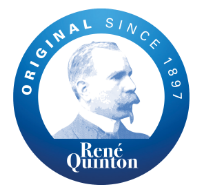Checkout as a new customer
Creating an account has many benefits:
- See order and shipping status
- Track order history
- Check out faster
Checkout using your account
In its natural state, we can only determine the existence of one type of seawater. However, once it has been subjected to our AQP protocol, we can differentiate between two types of seawater for human consumption, depending on its concentration in mineral salts:
With seawater, we not only find sodium chloride (common sea salt), but we can also detect:


Ions of up to 78 elements of the periodic table, such as: magnesium, calcium or potassium in higher concentration; and manganese, copper, lithium, vanadium, or zinc as minority or trace elements.


Mainly phytoplankton. During the photosynthesis process, they are the largest producer of organic compounds such as carbohydrates, amino acids, lipids or vitamins.


Wastes such as heavy metals, petroleum derivatives or microplastics, as well as different bacteria capable of surviving in the marine environment, such as fecal bacteria (escherichia coli and enterococcus), bacteria of the Vibrio genus (Vulnificus or Cholerae) or Staphylococcus Aureus.
In the case of Quinton Medical specialties, all our raw material is submitted to double cold microfiltration following the AQP protocol. This allows us to remove the microbiological load naturally present in seawater, preserving its physical and chemical qualities.
Other sterilization systems, such as heat or ultraviolet rays, produce micro-precipitation of calcium and magnesium salts that are no longer bioavailable and cause the appearance of hydroxyl (OH-) or free radicals, destroying organic matter such as vitamins, amino acids and enzymes. In addition, with microfiltration we ensure the absence of microplastics (something that heat does not eliminate).

The Advanced Quinton Protocol is a unique process for obtaining and treating seawater that has been patented and perfected by Quinton's Technical Department.
The Advanced Quinton Protocol is made up of 3 phases:

EXTRACTION
Extraction of the raw material in very specific areas of the ocean (phytoplankton vortexes).

MICROFILTRATION
Once in the laboratory, we sterilize the seawater by means of double cold microfiltration in a clean room.

ISOTONIZATION
We dilute the seawater with spring water that has very low mineralization.